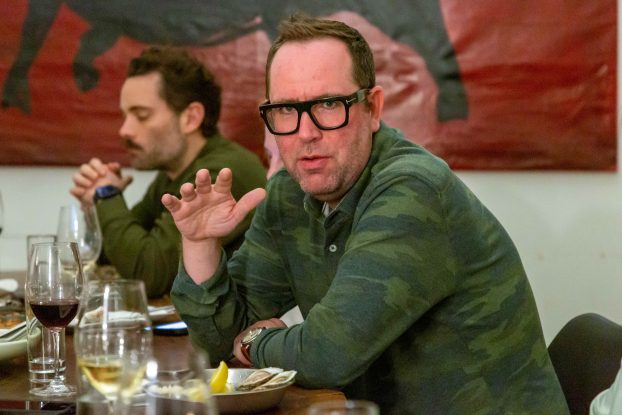
In a world where the digital landscape is as vast as it is volatile, media agencies hold the key to shaping an ethical, diverse, and quality media ecosystem — all of which is under continued, growing threat.
In previous Media in Canada roundtables, discussions have focused on the declining health of local media and questioned how to get off this fast-moving train. In our most recent roundtable, we explore the realms that have been neglected in the wake of the industry’s digital fervor and source opportunities that are being missed.
To find some answers, MiC brought together media leaders and marketers including Caroline Moul, president of PHD; Shane Cameron, CSO, OMD; David Rusli, CSO and CDO, Publicis; Jonelle Ricketts, head of marketing, IKEA; Irene Daly, VP, marketing, Canadian Tire; Iain Beauchamp, formerly head of marketing at Six Pints; Lisa Mazurkewich, head of marketing, Subway, and Nadia Niccoli, head of marketing, Diageo.
Moderating the discussion was Jennifer Horn, editor and content director for strategy and Media in Canada. Also in attendance were Tracy Day, managing director, ad products and innovation at The Globe & Mail, as well as strategy and Media in Canada‘s publisher Lisa Faktor, associate publisher Neil Ewen, and MiC editor Greg Hudson.
This is the second installment of our discussion. If you missed the first part, you can read it here, and be sure to check back tomorrow for part three.
 We’re hearing a lot of love for traditional media, but the reality is that local media is suffering. So, the big question is, are you thinking about and preparing for what comes after the fall of local media?
We’re hearing a lot of love for traditional media, but the reality is that local media is suffering. So, the big question is, are you thinking about and preparing for what comes after the fall of local media?
PHD’s Caroline Moul: I think what is required to prevent the collapse, or to mitigate some of the collapse, is investment. If we don’t, maybe the government will come and prop it up. Maybe the global giants will find their way to put dollars behind journalism. It probably isn’t going to be enough. As a parent, it devastates me to have to think where my kids are going to get their news from. I think the reality is the content will be very different if there isn’t local media. But that is the struggle.
And when it comes to sport, look at the broadcasters in the U.S. – the big giants are going to go after live sports. You’ve got ESPN, Fox and a few of the other players coming together to make a streaming platform. They’re going to collaborate in order to have a stronger arm. We should be seeing that here.
Subway’s Lisa Mazurkewich: It’s interesting that there’s such a boom in sport. We know that live viewing is so key. All of a sudden we are seeing more women’s sports leagues. If you think about local sport being the pillar to help us build back local media, it’s an exciting time. And so now we need to decide where we take the momentum. How do we build off of that and tell those stories and build back local media?
 Diageo’s Nadia Niccoli (pictured right): Yeah, but it’s also driven by the way it’s priced. I do feel there’s also responsibility on the other side to price these programs appropriately to allow us to be able to invest. Because, if we looked at women’s soccer, for example, it was priced so exorbitantly versus men’s, which creates that vicious cycle where investment goes back into men’s sports. I encourage the big players to provide packages that are priced appropriate to enable Canadian brands to advertise and support. There is a certain need for everyone coming together, because we do get assessed on how we spend our dollars and we have to be able to defend our ROI. Sometimes there are choices that have to be made that are a bit heartbreaking.
Diageo’s Nadia Niccoli (pictured right): Yeah, but it’s also driven by the way it’s priced. I do feel there’s also responsibility on the other side to price these programs appropriately to allow us to be able to invest. Because, if we looked at women’s soccer, for example, it was priced so exorbitantly versus men’s, which creates that vicious cycle where investment goes back into men’s sports. I encourage the big players to provide packages that are priced appropriate to enable Canadian brands to advertise and support. There is a certain need for everyone coming together, because we do get assessed on how we spend our dollars and we have to be able to defend our ROI. Sometimes there are choices that have to be made that are a bit heartbreaking.
Moul: But if a giant comes in and buys [live sports offerings], it’s going to be astronomically higher in comparison to TV.
OMD’s Shane Cameron: Running a news organization or a content provider that broadcasts coast-to-coast is an expensive endeavour. I don’t have to tell anyone here that people have less cable than normal. But there is a lot of economics wrapped up in that. A lot of things got made for a long time with some of the specialty channels because of how their revenue share worked.
So forget about the signals that say your brand should be spending here or there, the money that it takes to make the thing that we would potentially advertise on is being pressurized and I think there’s a real threat. In sports it’s easy to talk about because it’s kind of a perennial thing. There’s always an NHL, there’s always an NFL, the CFL, there’s always an NBA. There’s always an NCAA women’s tournament. It doesn’t get cancelled. It doesn’t go into hiatus. It doesn’t go into syndication. It is appointment television.
This is all to say that I don’t know where it goes [if local media were to fall]. But I know it looks different. If you are a producer of scripted programming, or the producer of a well-produced live sporting event, the money has to come from somewhere. And if the major platform you’re pushing content to is no longer a choice, who do you partner with? Is it a partnership? Do the lines start to blur between the international tech players? And do they become the new cable company? This is the problem.
 Niccoli: But then, how do we as marketers make a case for having those thresholds? How do we get the Bells and the Corus’ and the Rogers to play the way these digital giants are in terms of giving us the ROI? They are very consistent, they know exactly what to deliver and they speak our language.
Niccoli: But then, how do we as marketers make a case for having those thresholds? How do we get the Bells and the Corus’ and the Rogers to play the way these digital giants are in terms of giving us the ROI? They are very consistent, they know exactly what to deliver and they speak our language.
Moul: I think if you’ve grown up in a world where this is your behemoth and this is how you make your money, change is hard. We all know that. Are we looking at the right matrix for what the tech giants are feeding us for the measurement? Is it neutral or are they telling you the numbers? Do you have a need to measure it?
They will not let third parties come in from a holistic measurement view. Just so we’re clear, we would not allow that for any of the Canadian players. And so, how do we look at a more neutral approach? How do we put pressure on the tech giants?
I think those pieces are really key: What are you looking at? Who gave you the numbers? Where did they come from? And are they checking their own homework or have you validated a different lens to make sure that you’re looking at it very neutrally? Have you stacked up news against the social players?
We have a tendency – all of us – to go down a tunnel view of what Snap, for example, is doing right now? What can we do there with AR? But what we need to do every now and then is actually come up for a macro view. What does consumer behaviour look like, or what are the cultural trends at a macro review? And then, are we in the right environment for us?
We also need to level-set ourselves as a marketing industry. Our understanding of consumer behaviour from a media consumption perspective is not equal to the average Canadian, and we need to not use surveys to tell us where everybody’s spending their time.

Mazurkewich: [A recent study had] media people rank where they thought people’s attention was. And of course, the average Canadian is all over social media and nobody watches TV anymore. But I remember five years ago, nobody was watching television.
Subway is a pretty accessible brand and we actually had our team vote on their media choices. It was their favorite part of a two-day meeting. And it absolutely blew their minds to see where they were spending their time and what they were watching and how many actually sign up for all of the streaming services.
Moul: And then that behaviour looks different from urban to suburban to rural. There are also nuances with Albertans versus Ontarians. And we sometimes forget to think of those things. So what is the macro view? What does that look like from a marketing perspective?
IKEA’s Jonelle Ricketts: And how do you reach some of those audiences that didn’t grow up in Canada or have lived here for a significant amount of time? For people who are new to Canada, is there that same level of trust or awareness of certain local things versus some of the bigger global brands?
Moul: As an immigrant looking to assimilate, you also want to get engaged in the community and local media to understand what’s actually happening in your neighborhood or in your marketplace. And so there’s also interesting research on that in terms of, yes, people who are from a different country tend to bring some of their habits with them, but they will also assimilate. And they will go to some of those trusted brands as a means to assimilate.
The other thing is subscription fatigue. A lot of people cut the cord because the cost for cable was significant and broadcasters have adapted that in terms of price points for different kinds of models. And when you think about some of the tech giants, they have operated these businesses at a loss and they are now having to incur price increases – so if somebody added up all the subscriptions they have with those streaming platforms, then it starts to cost just as much as cable.
Continue the conversation in Part 3 of our Roundtable Discussion























